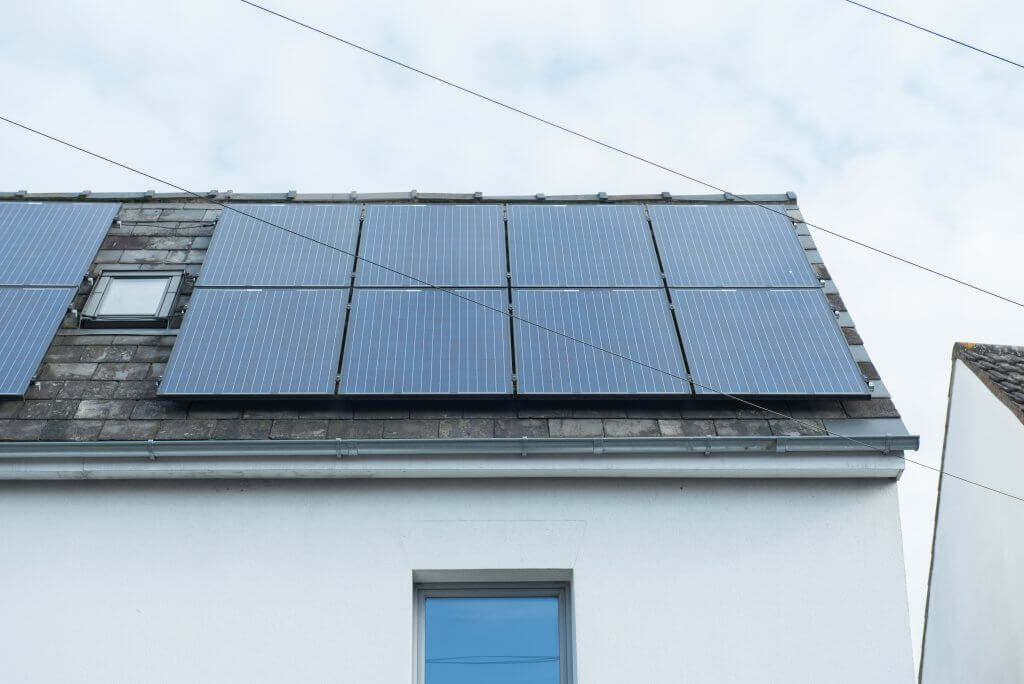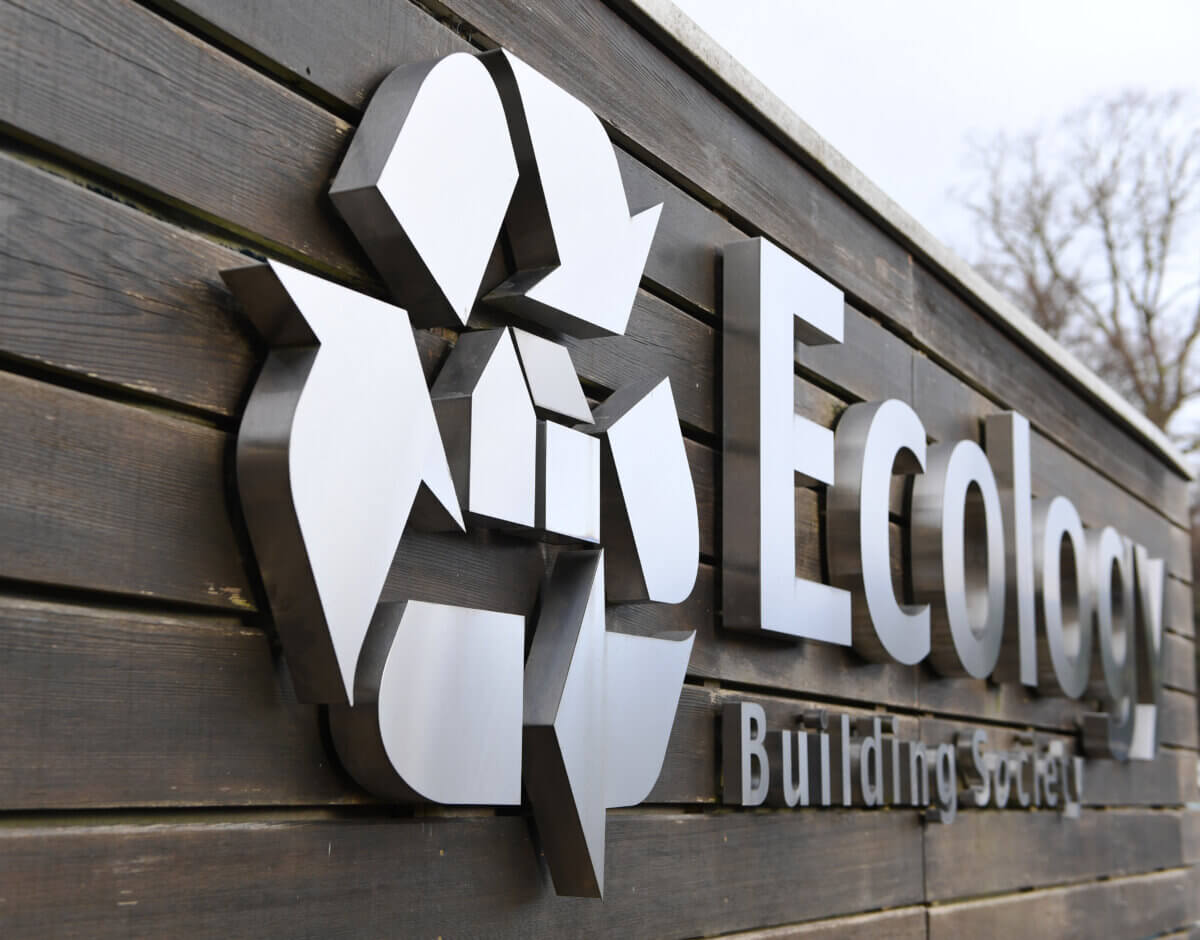Renewable Energy and Solar Panels

This article is part of a series of guides offering advice and help with your eco renovation or retrofit project.
You can also download our free Guide to Eco Renovation for a more comprehensive guide to energy efficient home renovations. Today we will look at the benefits of renewable energy and solar panels in particular.
Any sustainable, energy efficient home renovation or retrofit will require not only good quality natural insulation but be dependent on low-carbon technologies such as installing air source heat pumps or renewable energy sources such as solar panels.
Benefits of Solar Panels
You may be aware that 17% of the UK’s carbon emission comes from homes, and with energy prices rising at an alarming rate, the benefits of using heat pumps or installing renewable energy sources such as solar panels are clear:
-
-
- lower your fuel bills
- provide a renewable resource that allows you to sell electricity back to the grid via the Smart Export Guarantee
- increases the value of your home
- emission-free energy
- reduce your carbon footprint
-
Can solar panels really increase the value of your home?
A recent report from the WWT and Scottish Energy suggested solar panels would likely increase a property’s value between 0.5% – 2.0%; installing a heat pump could increase the value up to 3.0% and adding an electric car charging point could add another 2.75%. Combining low carbon technologies with renewable energy sources not only makes long- or medium-term financial sense for homeowners but could move us all significantly towards our goal of net-zero carbon emissions.
What is the Smart Export Guarantee?
The Smart Export Guarantee (SEG) is a UK government-backed initiative designed to ensure small-scale generators, such as a home with solar panels, are paid for the renewable electricity they export to the grid.
For instance, a typical south-facing 3-bed Victorian mid-terrace, with no shade, and fitted with a 4kW solar panel system could potentially net up around £200-300 annually in fuel bill savings plus payments from SEG. Moreover, you could also potentially save up to a tonne of carbon per year; over a lifetime that’s a saving of 25 tonnes, equivalent to a car burning over 10,000 litres of petrol or 10 round-trip flights from New York to London!
Check eligibility for the SEG scheme here.
How do Solar Panels Work?
A solar photovoltaic (PV) panel is made up of a great number of layers of semi-conducting cells, usually made from silicon. When sunlight falls onto these cells they produce a flow of direct current (DC) electricity. An inverter is installed to convert the DC flow to AC used by household appliances. Although most solar panels do not require direct sunshine to work, the stronger the sunlight the more electricity is produced, up to around 355W per panel. A typical system may contain 15 panels but the size of any system will depend upon the individual household’s requirements, the angle of the roof’s slope; shading (e.g. trees); and direction (e.g. it is south facing etc).
There are a great many websites to help specify the right system for your particular property, and if you would like to know more about how much money and carbon emissions you could save using solar energy, try the Solar Energy Calculator at the Energy Saving Trust.
Types of Solar Panel
There are three main types of solar panels commercially available for domestic use:
-
-
- monocrystalline solar panels
- polycrystalline solar panels
- thin-film solar panels
-
Monocrystalline Solar Panels
Monocrystalline solar panels are the most commonly used solar panels on the market today. They are made from the purest silicon. Manufacturing costs are generally higher than other type of solar panels because it takes longer to produce the precise silicon ingots plus there is significant wastage (up to 50%); also, the high temperatures required means that the carbon footprint of production tends to be higher (38.1g CO2-eq/kWh). This is offset by a higher energy efficiency (around 22-27%) and much longer lifespan of around 25 years. The main problem with monocrystalline solar panels is that they are not as productive in lower light conditions or if they get covered in dirt or snow.
Polycrystalline Solar Panels
Polycrystalline solar panels use blocks of silicon crystals and do not require the same time and energy as monocrystalline solar panels which significantly reduces their carbon footprint (27.2g CO2-eq/kWh) and makes them cheaper to produce. Although generally not as efficient (around 19%) polycrystalline solar panels are better in lower light conditions and so, taking typical UK fluctuating light conditions into consideration, they can, over time, end up as efficient as monocrystalline solar panels. However, there do require a larger amount of space to the produce the same amount of electricity and are generally not as long-lasting as other panels.
Thin-Film Solar Panels
Production of thin-film solar panels is simpler and quicker than the other types of panels discussed above. A layer of photovoltaic material is deposited on an inexpensive substrate like glass, metal, or plastic. Although it is relatively inexpensive to manufacture and has a lower carbon footprint (21.4g CO2-eq/kWh), it is also much less efficient (15-22%) though it is more lightweight and flexible. There are some thin-film technologies (e.g. cadmium telluride) that have lower costs, higher payback time, lower carbon footprint, and lower water use over their lifetime than all other solar technologies. However, the materials used in these panels, such as cadmium, are highly toxic if inhaled and can leach into the ecosystem if not disposed of correctly.
Are solar panels carbon neutral?
Although the power solar panels generate is itself clean and emission-free, the technology is not totally carbon-neutral. As we saw in our previous blog about insulation, there is a carbon cost in all production of goods, from extraction and manufacture to transportation: what we call ‘embodied energy’. Solar panel manufacturing is no different. However, this should not deter you from investing in solar panels as part of your eco renovation. A 2017 study in Nature found that coal generates 18 times and gas 13 times the carbon footprint of solar power over its lifetime.
Download our guide to Eco Renovation here.
The Benefits of Fabric First and Whole House
The benefits, both financially and to the environment, of using local, renewable energy such as solar panels are self-evident. To get the best out of it, it is essential that your home is made as energy efficient as possible before installation. We have advocated in previous blogs a fabric first approach that thoroughly improves the integrity of your home through energy efficient floor and wall insulation, draught-proofing and optimal glazing in order to maximise the benefits that solar panels can offer in terms of fuel savings and carbon emissions.
A Whole House approach which provides the right mix of solar panels, battery and renewable heating source such as an air source heat pump could also significantly reduce your annual running costs and carbon footprint.
| FINANCIAL BENEFIT PER YEAR under a standard variable tariff | EMISSIONS AND ENVIRONMENTAL IMPACT & OTHER BENEFITS OF PV ELECTRICITY |
|
|---|---|---|
 | £586 | • Typically save over 900kg of CO2 per year • Typically takes around 6 years to pay back its energy cost • Contributes up to 98% fewer emissions than electricity generated from 100% coal • Uses less water, lower toxicity to humans, contributes up to 97% less acid rain |
 | £713 | • Reduce carbon emissions by a further 40% • Become more energy independent from the grid • Get paid to export energy back to the grid (SEG) • Uptime - most batteries kick into action in the event of a power cut |
 | £904 | • Reduce running costs even further • Fossil-fuel free, contributing to Net Zero • Future proofing against rising fuel costs |
The Future of Solar Energy
It is claimed that 4,000 solar systems are fitted in the UK every month and costs for installation have reduced by 60% in the last decade. Nevertheless, domestic solar energy and battery storage is a relatively new technology and developing all the time. Current technology is heavily invested in the use of silicon. Other materials are being developed although many of these alternative metals have issues with toxicity. On the other hand, organic photovoltaics (OPV) are being explored which use small organic molecules to conduct electricity with a lower environmental impact. But perhaps, the most exciting possibilities of OPV is that it can absorb light from ambient or indoor lighting. Better low-light efficiency together with lower production and installation costs and increase battery storage capacity is the way to secure a low-carbon renewable energy resource on our way to a net-zero future.
Why not check out some of our members’ renovation projects?






